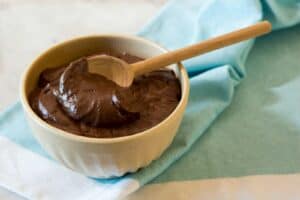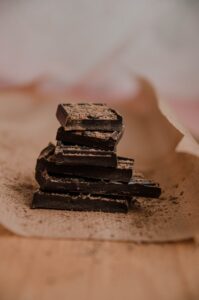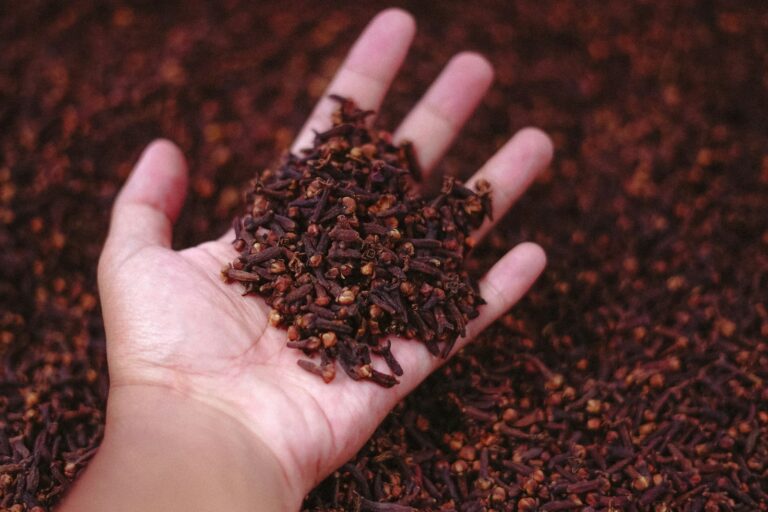As a chocolate enthusiast, I’ve always been captivated by the rich, complex aroma that seems to dance through the air the moment you unwrap a piece of dark chocolate. It’s a scent that promises a journey of flavors, but what’s truly fascinating is the science behind this alluring fragrance. Recent research has shed light on the intricate symphony of molecules responsible for dark chocolate aroma exploration, revealing a world as deep and complex as the chocolate itself.
On a groundbreaking exploration published by the Journal of Agricultural and Food Chemistry, scientists dove into the essence of dark chocolate, employing advanced techniques to unravel the mystery of its scent. They discovered that the aroma we love is crafted from a blend of 25 different molecules, with 30 potential scents pinpointed as key players. This revelation not only enriches our appreciation for chocolate but also opens up new avenues for understanding how our senses interact with food.

Embarking on this aromatic journey, I couldn’t help but marvel at how a simple pleasure like chocolate could hold such intricate secrets. It’s a reminder that behind every bite, there’s a story waiting to be told, a science waiting to be discovered. And as we delve into the hidden world of chocolate aroma, we’re not just indulging our senses—we’re embarking on a sensory exploration that bridges the gap between culinary art and chemical science.
Discover the origins and cultural significance of chocolate in ancient civilizations through our in-depth exploration at Chocolate in Ancient Civilizations.
The Essence of Chocolate Aroma Exploration
Understanding Aromatic Compounds in Chocolate
As I continue my dive into the essence of chocolate aroma, it’s crucial to understand the aromatic compounds that define this beloved sweet treat. Chocolate’s unique scent profile originates from a symphony of molecules, each playing a crucial role in creating the sensory experience that greets me upon unwrapping a piece of dark chocolate. Among them, pyrazines stand out for their significant contribution to chocolate’s rich, roasted flavor notes, reminding me of toasted bread or even coffee.
These aromatic notes arise from the cocoa beans themselves, influenced heavily by their post-harvest processing. I’ve learned that pyrazine levels can vary widely among different cocoa varieties, affected by factors such as weather conditions, ripeness at harvest, and the particularities of the region where the cocoa was grown. For example, well-fermented cocoa beans from Ghana boast higher levels of these key aromatic compounds compared to their Mexican counterparts.
Dive into our detailed comparison exploring the differences between artisanal and mass-produced chocolates at Artisanal vs. Mass-Produced Chocolate.
When tasting chocolate, it’s fascinating to think about the journey these flavors have undergone—from the cocoa bean to the fine craft chocolate I hold in my hand. The process of roasting cocoa beans is paramount, transforming the raw, earthy notes of the unprocessed bean into the complex aroma profile that chocolate connoisseurs cherish. This transformation underscores the importance of the chocolate maker’s art form, blending science and sensory evaluation to craft an experience that delights the senses.
The Impact of Processing on Aroma
Processing plays a pivotal role in the development of chocolate’s aroma, a fact that becomes evident as I explore the different stages from cocoa bean to the final product. Starting with fermentation, a critical step post-harvest, I’ve realized that this stage sets the foundation for flavor development. Cocoa beans, through fermentation, begin to reveal the precursor compounds that will eventually evolve into the distinguishing aromatic and flavor notes in chocolate.
Moving beyond fermentation, the roasting of cocoa beans further alters these compounds, enhancing the flavor profile and bringing out the rich, nuanced aromas that define quality chocolate. It’s remarkable how the specific temperature and duration of roasting can influence the flavor notes, whether they lean more toward fruity or nutty, or perhaps bring out hints of vanilla or caramel.
Conching, another essential processing stage, refines the chocolate’s texture and flavor. As the chocolate is heated and continuously mixed, volatile acids are released, and the flavor profile becomes smoother and more rounded. This step also plays a vital role in balancing the bitter and sweet notes, ensuring that each bite of chocolate melts perfectly in my mouth, releasing a cascade of flavors that culminate in a satisfying aftertaste.
Explore a diverse array of chocolate experiences beyond fondue with our guide to uniquely flavored chocolate bars at Unique Flavored Chocolate Bars.
How to Taste Chocolate: A Step-by-Step Guide
Preparing Your Senses
Before diving into the chocolate tasting experience, it’s crucial to prepare my senses. I ensure the environment is free from strong odors and my palate cleansed to avoid interference with the aroma exploration. Drinking water or eating a plain cracker helps cleanse my palate. I also pay attention to the room’s temperature, aiming for a neutral climate to prevent any alteration in the chocolate’s texture or aroma before the tasting begins.
Tasting Different Types of Chocolate
When tasting chocolate, I start with milk chocolate and gradually move towards dark chocolate to appreciate the intensity of cocoa solids in each type. I carefully observe each chocolate’s color and gloss, indicative of quality and proper tempering. Breaking the chocolate close to my ear, I listen for a sharp snap, a sign of a well-tempered piece.

For every type of chocolate, I let it melt slowly on my tongue, closing my eyes to concentrate on the evolving flavors. Milk chocolate, with its higher milk solids and sugar content, offers a creamy, caramel-like sweetness, whereas dark chocolate, rich in cocoa solids, unveils a spectrum of flavors from fruity and floral notes to earthy and nutty undertones. I take notes of the tasting experience, including flavor notes, aftertaste, and any flavor evolution, as each chocolate’s essence is a complex tapestry woven from its origin, bean type, and post-harvest processing.
The Role of Texture and Melting
Texture plays a crucial role in the chocolate tasting experience. The smoothness indicates the fineness of the cocoa particles and the quality of conching. I pay attention to how each chocolate melts in my mouth, as this melting behavior unveils subtle flavors and aromas. Dark chocolates with higher cocoa butter content tend to melt more readily, releasing a rich array of aromatic notes varying from roasted coffee to toasted bread.
I always consider the mouthfeel – whether the chocolate is velvety, gritty, or somewhere in between – as it influences my overall impression of the chocolate. The melting quality not only affects the release of flavors but also the length of the taste experience; fine craft chocolate usually leaves a long-lasting impression on the palate with a satisfying aftertaste.
Tasting chocolate is an art form that requires attention to detail and a willingness to explore different flavors and aromas. By focusing on the steps outlined, I immerse myself in the sensory evaluation of chocolates, discovering the unique flavor profiles and the story behind each bite.
Explore a curated collection of chocolate-themed merchandise designed to captivate chocolate enthusiasts beyond fondue at Chocolate-Themed Merchandise.
The Science Behind Chocolate Aroma
Key Aromatic Compounds and Their Origins
I find chocolate aroma exploration fascinating for many reasons, not least of which is understanding the key aromatic compounds in chocolate and where they come from. The scent of chocolate, that intoxicating fragrance we all recognize, is a complex blend of volatile and non-volatile compounds. These compounds are formed through various stages of chocolate production, starting from the fermentation of cocoa beans to the final roasting process. For instance, during fermentation, yeasts and bacteria break down the sugars in the cocoa pulp, leading to the formation of esters and alcohol, which give chocolate its fruity notes. As the cocoa beans are dried and roasted,
Maillard reactions occur. These chemical reactions between amino acids and reducing sugars bring out rich, roasted flavors, reminiscent of toasted bread and nuts. The precise combination of these compounds, including vanillin for vanilla notes, linalool for floral aromas, and pyrazines for earthy and roasted scents, creates the unique flavor profile of chocolate. The variation in these compounds, resulting from differences in cocoa bean genetics, post-harvest processing, and roasting techniques, makes each chocolate experience distinct.
The Influence of Cocoa Varieties and Terroir
Diving deeper into chocolate’s flavors, it’s undeniable that the varieties of cocoa beans and their terroir play crucial roles. Just like wine, fine craft chocolate exhibits a vast range of flavors influenced by the cocoa beans’ genetic variety and the environment in which they’re grown. Each cocoa variety, whether it be Criollo, Forastero, or Trinitario, carries its unique taste profile, from fruity and floral notes to nutty and earthy undercurrents.
Taking this exploration a step further, terroir—the climatic conditions, soil composition, altitude, and surrounding biodiversity where the cocoa trees grow—significantly impacts the beans’ flavor profile. Cocoa beans grown in the rich, volcanic soils of Ecuador, for example, tend to exhibit floral and fruit-forward notes, meanwhile, beans from the dense forests of Ghana are prized for their full-bodied, rich cocoa flavor. This concept of terroir extends to the post-harvest processes of fermentation and drying, which are meticulously tuned by expert producers to enhance the beans’ inherent flavor qualities.
Pairing chocolate with this in-depth understanding of aroma, I’ve realized, elevates the tasting experience. Whether it’s tasting chocolate alone, or pairing chocolate with other foods or wines, recognizing the intricate dance of aromatic compounds, influenced by cocoa varieties and terroir, brings an added layer of appreciation to every bite. Each piece of chocolate holds a story—a blend of science, art, and environment—waiting to be explored through its aroma.
Enhancing Your Chocolate Tasting Experience
Building a Chocolate-Tasting Vocabulary
I’ve learned that diving into chocolate tasting begins with developing a robust vocabulary to articulate the diverse sensory experiences chocolate offers. This vocabulary encompasses terms that describe not only the flavor but also the aroma, texture, and aftertaste of chocolate. For instance, when tasting dark chocolate, I pay attention to whether the flavor notes lean towards fruity, nutty, floral, or earthy dimensions. The essence of fine craft chocolate emerges from its cocoa solids, where the cocoa beans have been processed into a rich final product.
Understanding the nuances of chocolate’s flavors, such as identifying a hint of vanilla or the unmistakable richness of cocoa butter, enhances my ability to appreciate the art form of chocolate making. Texture plays a crucial role too; I note if the chocolate melts smoothly in my mouth or has a grainy feel, indicative of its quality and processing. Developing this vocabulary isn’t just about enhancing personal tasting experiences; it’s about deepening my connection to the craft of chocolate making, from bean to bar.
Pairing Chocolate with Other Flavors
Pairing chocolate with complementary flavors elevates the tasting experience to new heights. I explore pairing chocolate with a variety of ingredients that can accentuate its intricate flavors. For dark chocolate, with its rich and sometimes bitter essence, pairing it with red wine enriches the fruity and aromatic notes present in both. The robust flavors of coffee, on the other hand, can enhance the deep, roasted nuances of dark chocolate, creating a harmonious balance between bitterness and depth.
I also venture into pairing chocolate with fruits like citrus or berries, where the sharp, refreshing notes of the fruit contrast with and highlight the sweetness and richness of the chocolate. Another fascinating pairing is chocolate and cheese; the creamy texture of cheeses like brie forms a delightful contrast with the solid, slightly bitter profile of dark chocolate, creating a unique tasting experience. These pairings don’t just double the pleasure; they create a symphony of taste, where each flavor enhances the other, resulting in a more profound and enjoyable tasting experience.
Exploring Chocolate Tasting Events and Tours
What to Expect
As someone who’s deeply invested in the art of chocolate tasting, I’ve learned that embarking on chocolate tasting events and tours is akin to diving into the heart of aroma exploration. These curated experiences are designed not only to dazzle the taste buds but also to enrich one’s understanding of chocolate’s complex flavor profiles, from the earthy notes of cocoa beans to the caramel sweetness of milk chocolate.
In chocolate tasting events, expect to encounter a wide range of chocolates, each offering a unique sensory journey. Attendees are guided through the nuances of tasting chocolate, learning to identify the multitude of flavors, textures, and aromas that high-quality chocolate possesses. As the chocolate melts in your mouth, you’ll learn to pinpoint floral, nutty, and even fruity notes, expanding your palate and enhancing your ability to savor each bite.
Tours, especially bean-to-bar tours, offer an immersive look into the chocolate-making process. From observing the transformation of cocoa beans into the final product to understanding the significance of post-harvest processing, these tours offer a hands-on approach to appreciating the craft behind fine chocolate. You’ll witness first-hand how factors such as temperature and texture play a crucial role in developing chocolate’s flavors, offering a deeper appreciation for the craftsmanship involved.
Finding Famous Chocolate Tasting Experiences
Finding notable chocolate tasting experiences requires a keen eye for quality and a desire to explore different flavors. I always recommend starting with renowned chocolate festivals, where you can sample a variety of artisan chocolates and meet the masterminds behind them. These festivals are a playground for anyone eager to explore the diversity of chocolate, from dark to white chocolate, each with its distinct flavor profile and aroma.
For those seeking a more structured approach, signing up for chocolate tasting workshops is a fantastic option. These workshops are often led by experienced chocolatiers and offer a detailed exploration of chocolate’s sensory aspects, including aroma, taste, and aftertaste. They also provide valuable insights into pairing chocolate with other flavors, such as wine, fruit, or even cheese, elevating the tasting experience to new heights.
In my journey, I’ve found that the key to a memorable tasting experience lies in the willingness to dive into the essence of chocolate. Each event or tour offers a unique opportunity to deepen one’s understanding of this exquisite art form, turning each bite of chocolate into a moment of pure sensory delight.
Diving into the world of chocolate aroma has been an enlightening journey. I’ve discovered that there’s much more to chocolate than meets the eye. It’s not just about the taste; it’s about appreciating the art and science behind every bite. From the intricate details of cocoa’s chemical makeup to the enriching experiences of chocolate tasting events, every aspect contributes to our understanding and enjoyment of chocolate. I encourage you to explore this sensory journey yourself. Whether it’s attending a chocolate festival or a workshop, there’s a whole world of flavors, textures, and aromas waiting to be discovered. Let’s deepen our appreciation for chocolate together, one aroma at a time.
Frequently Asked Questions
What is the aroma of chocolate?
The aroma of chocolate is complex, comprised of a wide array of scent notes that may include earthy, nutty, and sometimes fruity or floral undertones. This rich bouquet is derived from the intricate combination of chemical compounds present in cocoa.
How do you make a room smell like chocolate?
To create a chocolate-scented room, mix a few drops of chocolate essential oil with a couple of teaspoons of alcohol and a cup of water in a spray bottle. This natural method avoids synthetic fragrances, offering a delightful chocolate aroma to your surroundings.
Is chocolate an attractive smell?
Yes, chocolate has an exceptionally attractive smell to many people, more so than its taste to some. This allure is largely due to roasted cocoa beans, rich in beta-ionone – a compound known for its presence in perfumes and essential oils, producing chocolate’s irresistible scent.
Do chocolatiers make good money?
As of Apr 10, 2024, the average hourly pay for chocolatiers in the United States is $21.14. Salaries can vary significantly, with some earning as much as $39.90 an hour and others as little as $12.02, depending on experience, location, and place of employment.
Do chocolatiers make a lot of money?
The national average annual salary for a chocolatier is $32,188. While this figure gives a broad overview, actual earnings can vary widely based on factors like geographic location, experience, and the venue of employment within the chocolate making industry.
